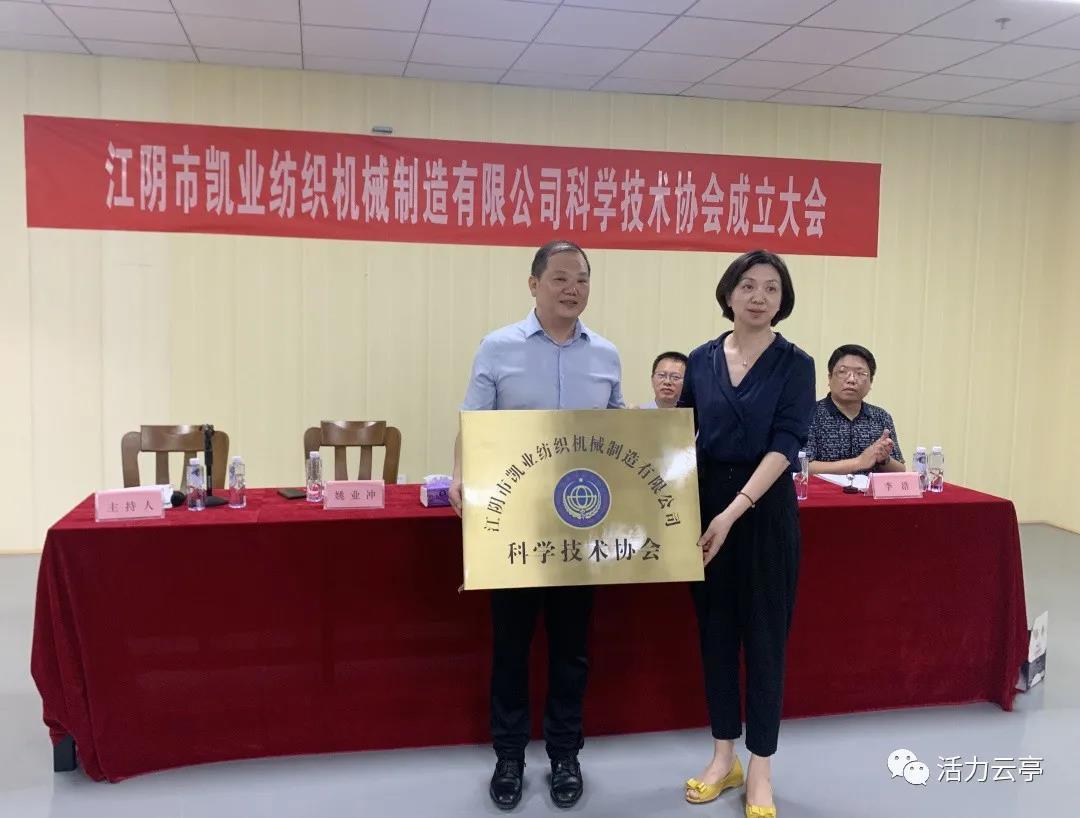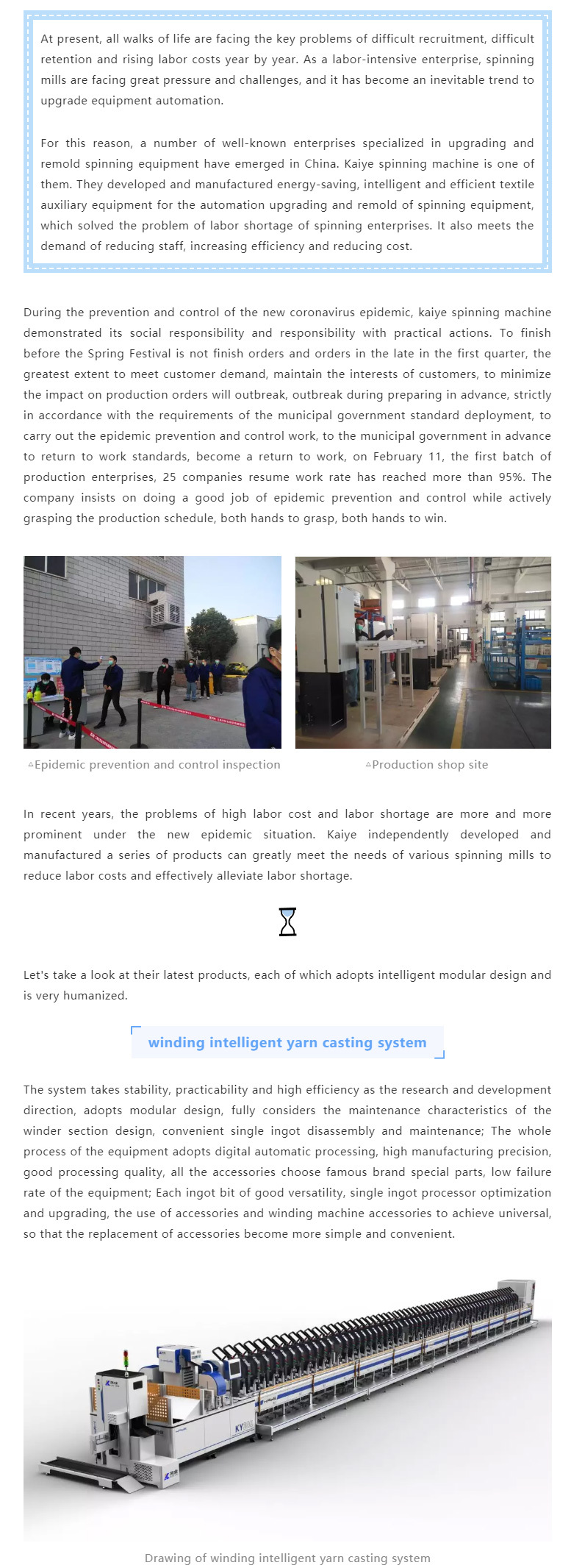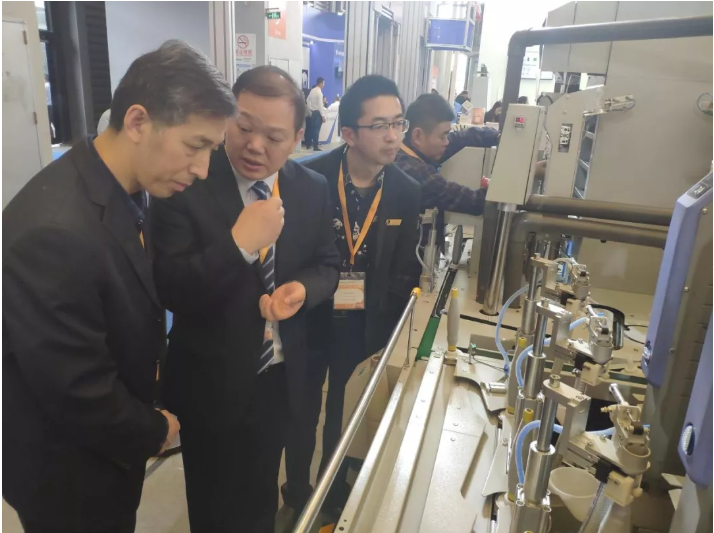NEWS

Low demand for conventional products
Jul 24,2015
In 2014, due to the market environment, sales of textile machinery products generally declined. What are the new changes in the market situation and development environment facing the textile machinery industry in 2015? What adjustments should be made to the development focus of the enterprise?
Recently, five research teams of the China Textile Machinery Association conducted a concentrated research visit to textile machinery manufacturers, and conducted a questionnaire survey on production and operation of 117 companies. From the surveys and questionnaires and related statistics, it is not difficult to see the current operating status of textile machinery enterprises. At the same time, it can be seen that as the textile industry transforms and upgrades its structural adjustment, the demand for the textile machinery market also presents new characteristics.
Orders generally decline
At present, China's textile industry is facing a significant slowdown in the growth of the domestic demand market. The overall cost has continued to rise and the internal structural contradictions in raw materials, production capacity, layout, and corporate organization have entered a new normal state of low and medium speed development. As the textile machinery industry upstream of the textile industry chain, the impact has been very prominent. The China Textile Machinery Association's questionnaire survey on the production and operation of 117 key enterprises shows that the order volume of enterprises has generally declined in 2014: knitting machinery companies have taken the lead, and nearly 80% of them have declined their orders; spinning machinery companies have followed closely, nearly Orders from 70% of companies fell; orders from weaving and printing and dyeing machinery companies dropped from 50%; chemical fiber and non-woven machinery companies were relatively stable, and orders from half of them remained flat. In addition, nearly half of the companies' product prices in 2014 were the same as in the previous year, but 40% of the companies had lower product prices than in 2013. For the operation of the entire industry last year, 85% of the companies surveyed were not optimistic or average.
From the perspective of product categories, the sales of main products of spinning machinery fell across the board in 2014 due to the impact of upstream raw materials and the market downturn. According to the statistics of China Textile Machinery Association, the sales of cotton spinning frames in 2014 were 5.2 million spindles, a year-on-year decrease of 27.78%, of which 3.1 million spindles were sold, a year-on-year decrease of 11.43%. 48.61% rose to 59.62%, and exported about 1.14 million ingots. The sales of semi-automatic rotor spinning machines was about 270,000, a year-on-year decrease of 12.90%. The sales of cluster spinning were about 2.87 million spindles, a year-on-year decrease of 21%. More than 480 automatic winders were sold, a year-on-year decrease of 41.73%, and 965 units were imported from Germany, Italy and Japan during the same period, a year-on-year decrease of 28.52%. More than 1,000 combers with more than 350 pinches were sold, a year-on-year decrease of 12.5%. Qingshaolian's sales were about 316 lines, a year-on-year decrease of 27%.
As the market demand for chemical fiber machinery and equipment has fallen sharply, conventional chemical fiber production equipment has been slow to sell. According to statistics, in 2014, polyester and nylon filament spinning machines sold around 10,000 spinning positions, and foreign-funded enterprises' shipments accounted for more than 60%; polyester short fiber complete sets of equipment added nearly 300,000 tons of capacity; viscose fiber complete sets of equipment Increased production capacity by more than 400,000 tons; sales of texturing machines were about 1,600 units, and high-speed texturing machine shipments were basically unchanged from the previous year.
In the cotton textile industry, filament weaving industry, home textile industry and other major weaving machinery downstream industries are trapped by insufficient inventory and domestic demand, weaving machine sales have declined. At the same time, due to the impact of the depreciation of the Japanese yen, market competition has become more intense. From the perspective of import, export, and domestic sales, in 2014, sales of almost all shuttleless models declined to a certain extent. Among them, the rapier loom fell by more than 11.8%, and the air jet loom fell by 14.37%. The water jet loom is affected by the increase of environmental protection pressure, and the output decreases by 1/3.
The market performance of circular knitting machines, warp knitting machines and flat knitting machines is different: circular knitting machines are relatively stable, warp knitting machines are down, and flat knitting machines are at a trough. Among them, the sales of warp knitting machines was about 4,100 units, a decrease of 21% over the same period last year. After several years of double-digit growth, the warp knitting machine market is relatively saturated, resulting in a decline in demand for new machines. Enterprises purchase imported second-hand Raschel warp knitting machines, retrofit electronic traverse systems, and achieve pattern changes. There are no new changes in the technology of computerized flat knitting machines, and the homogenization is serious. The main flat knitting machines are all selling at prices. The annual output of computerized flat knitting machines is about 27,000 units, a year-on-year decrease of 46%.
Export market becomes a highlight
Despite the adjustment of the domestic market situation of China's textile machinery, the export market has become a bright spot. In 2014, China exported 3.148 billion US dollars of textile machinery to 177 countries and regions, a year-on-year increase of 24.64%. The survey shows that nearly 80% of knitting machinery companies, nearly 70% of weaving machinery companies, nearly 60% of chemical fiber and non-woven machinery companies, and nearly 40% of spinning machinery and printing and dyeing machinery companies increased their overseas orders in 2014. The export of more than half of the surveyed enterprises increased significantly year-on-year.
Statistics show that knitting machinery ranks first among all categories of textile machinery, with an export value of 848 million US dollars. And the weaving machinery grew the fastest, with an export value of 395 million US dollars, an increase of 62.24% year-on-year, among which the exports of the three major models of rapier loom, water jet loom, and air jet loom were 46.52%, 142.07%, and 119.58% The increase in quantity shows the improvement of domestic enterprises' product competitiveness. The export of spinning equipment also increased compared with the previous year, and the market was mainly in Southeast Asia. The increase in Bangladesh and Vietnam was particularly prominent. The low-end printing and dyeing industry has accelerated its transfer to Southeast Asia and other regions, driving the growth of domestic printing and dyeing equipment exports. According to customs statistics, exports of printing and dyeing equipment and parts in 2014 were about 423 million US dollars, a year-on-year increase of 15.1%. The main export markets were concentrated in India, Turkey, Indonesia, Vietnam and other countries.
With the acceleration of the international transfer of the textile industry, the pace of foreign textile machinery enterprises entering China has accelerated in recent years, and the domestic textile enterprises have accelerated their international layout, and the textile machinery export market is facing greater opportunities. China's textile machinery exports to the 10 ASEAN countries increased from US $ 346 million in 2010 to US $ 758 million in 2014, an average annual increase of 21%. In particular, the ASEAN Economic Community (AEC) will be established at the end of this year, which will further enhance the competitiveness of the textile industry in Southeast Asian countries. China's textile machinery exports in these countries and regions will still have greater growth potential. The survey showed that nearly half of the companies' overseas orders increased in the first quarter of 2015.
Adjustment brings new demand
The survey shows that insufficient domestic market demand, disorderly and poor price competition, and high product inventory pressure are the most problems encountered by the interviewed enterprises in production and operation. Most companies feel uncertain and lack confidence in the market situation in 2015. The survey shows that Wucheng spinning machinery enterprises, printing and dyeing machinery enterprises, chemical fiber and non-woven machinery enterprises, 40% knitting machinery enterprises, and 30% weaving machinery enterprises are not optimistic about the future trend. From the actual survey situation, compared with the same period in 2014, the number of orders in the first quarter of 2015 increased, remained the same or decreased, accounting for 1/3 each.
In 2015, the domestic cotton market and the situation of cotton consumption remain complex, the pressure on energy conservation and environmental protection constraints has increased, the industrial layout adjustment is facing new situations and new problems, the pressure for survival of small and medium-sized enterprises is outstanding, and the textile industry will continue to develop at a low and medium speed. Overall, this year's textile machinery enterprises will still face the problems of disorderly competition and insufficient domestic market demand. However, with the restructuring of the textile industry, the textile machinery market will pay more attention to energy-saving and emission-reduction models that are highly automated, can save labor, and improve the quality of textile products. The high-end textile machinery market represented by digitalization, networking, and intelligence will There is greater development space and demand potential.
Despite the current downturn in the industry, both domestic and overseas markets have high-speed, high-efficiency, and high-reliability spinning machinery that can meet the needs of high-quality textile production at the end.
Industrial transformation and upgrading also brings new demands. As the investment in the chemical fiber industry gradually returns to rationality, conventional chemical fiber production equipment is obviously slow-selling, and functional, differentiated, and high-quality intelligent chemical fiber complete sets of equipment have become the new focus of development. With the management and elimination of water jet looms and the upgrade of towel looms, the demand outlook for shuttleless looms, especially high-end equipment, is optimistic. As national and local governments continue to increase their requirements for energy saving, emission reduction, and elimination of backward production capacity, while labor costs continue to rise, forcing capable printing and dyeing companies to step up their transformation of equipment and upgrade their automation. This provides development opportunities for equipment manufacturing enterprises with technical support. At the same time, printing and dyeing machinery that saves energy and environmental protection, saves labor, and has a high degree of automation will gradually become the mainstream of the market.
The rapid growth of industrial textiles in recent years has driven non-woven machinery to stand out. According to the statistics of the Textile Machinery Association, in 2014, about 50 lines were sold with a width of 2.5 to 3 meters, and about 100 lines were sold with a width of 3 meters or more. About 40 lines were sold with a width of 6 meters or more. 30%. The sales of spunmelt composite lines are about 120, and about 20 lines are exported. In the future, multi-die composite production lines are expected to form new sales hotspots. The sales of spunlace equipment are about 22 lines. Cotton spunlace and wood pulp composite spunlace have grown significantly. The production line that can dissolve environmentally degradable spunlace materials is expected to become a new growth point in the future.
At the 2nd Council of the Seventh Session of the China Textile Machinery Association recently held, Li Lingshen, President of the China Industrial Textile Industry Association, proposed that to gain more attention for special equipment for industrial textiles, equipment manufacturers, industrial production enterprises and Closer cooperation between customers, especially during the initial stages of new product design and development. End users should be more familiar with the improvement of high-tech equipment on the comprehensive performance of industrial textiles, and understand the benefits of these innovations. The automation and comprehensive performance of high-tech equipment need to be further improved, efficiency and energy consumption need to be further improved, and manufacturing costs should be reduced through technological progress and economies of scale, thereby forming a breakthrough for industrial textiles to the traditional material product market.
He said that new nano-scale meltblown nonwoven materials processing technology and equipment, key technologies for composite weaving and molding processing, multi-row meltblown high-efficiency non-woven fiber preparation technology, differentiated small batch spunmelt nonwoven material processing technology and Equipment, three-dimensional hot-molding technology for complex-shaped fabrics, textile-based personalized medical device design and textile molding technology, and new-generation carbon fiber three-dimensional woven equipment will be the key development directions of special equipment for industrial use in the future.
More News



